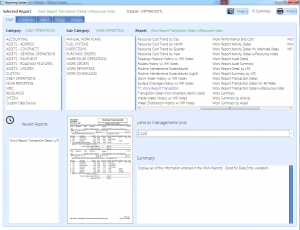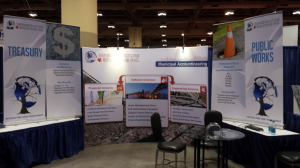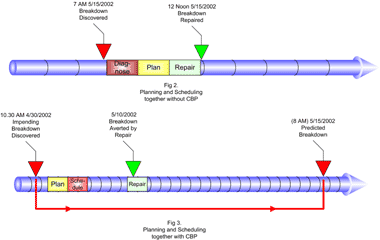![]()
Note from the Editor
Hello! Time for another fact-filled edition of our newsletter, and I’m excited to tell you what’s happening now (and also what’s coming very soon) here at CitiTech Systems, Inc.
It’s not every newsletter edition that lets me welcome our newest partner and also our newest user… and I must say, this feeling rocks! Please join us in welcoming …
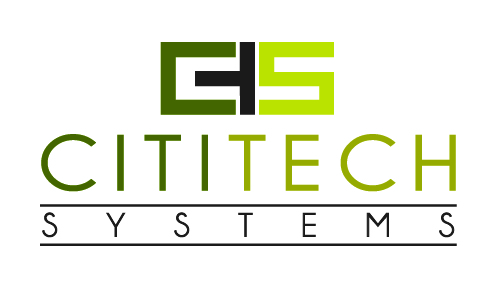

![]()

Maintenance Management Nuggets
Multifarious approaches to maintenance exist, but it seems the best results are achieved …
Note from the Editor
 Hello! Time for another fact-filled edition of our newsletter, and I’m excited to tell you what’s happening now (and also what’s coming very soon) here at CitiTech Systems, Inc.
Hello! Time for another fact-filled edition of our newsletter, and I’m excited to tell you what’s happening now (and also what’s coming very soon) here at CitiTech Systems, Inc.
It’s not every newsletter edition that lets me welcome our newest partner and also our newest user… and I must say, this feeling rocks! Please join us in welcoming our newest user, Oktibbeha County, Mississippi.
They’re taking advantage of CitiTech’s knowledge and tradition of caring to entrust us with importing their data into CMS – in its various forms, including spreadsheets and GIS-based asset data. They’re also getting on-site training soon, so they can “go live” ASAP. Welcome, Oktibbeha County!
Our newest partner is introduced by our president in “More CitiTech News”. Click here to find out who it is – or simply read on!
Speaking of new things, we now have a blog! CitiTech Systems will now be providing more up-to-date, relevant news articles – directly from our blog! No more waiting for the newsletter to get the latest news; just visit www.CitiTech.com to keep up with current news and informative articles from CitiTech.
We would love to hear from YOU on topics you would like to see discussed in our upcoming blog posts.
As you know, our software is living, breathing, and evolving to meet the needs of our user base… it’s a dynamic program whose users help shape its current and future functionality. It’s currently evolving into Version 9, and it will look better, be even easier to use (if that’s possible), and contain faster reports, I can’t WAIT until you get to use it! Until then, see the Coming Soon section for a “sneak peek”.
Putting together articles for Maintenance Management Nuggets, I’ve learned a lot about the management of maintenance. For example, a quick, one-shot solution to all our maintenance effectiveness problems doesn’t exist. Maintenance problems are best solved in two stages: (1) changing the way people think, and (2) getting them to apply their changed thought processes to technical/process problems, one step at a time. Recently, I’ve discovered that the best approach to maintenance management may be… a combination of approaches! Here’s hoping you find a “nugget” – or two.
Version 7 users, make this the year you upgrade to Version 8.5! Conversion is straightforward, fast, and free – and the functionality will knock your socks off – yet it’s so similar to Version 7 that training isn’t needed (although webinars are offered, free of charge, for “how-to” sessions – did you know?).
We’re working hard on perfecting Version 9 – it’ll be released soon. Don’t be left behind – convert to 8.5 before we release 9. Call me; I can show you what you’re missing in 8.5 and arrange conversion. What do you have to lose? The better question is, what do you have to gain? More and better functionality and reports. What’s not to love? 1 (800) 738-9892 x7624
We are almost as proud of our newsletter as we are our software, but are always open to feedback and suggestions. What do you like best about it? What would you like to see that isn’t there? Is there a topic or series of topics you’d like to see us cover? Just as we listen to YOU, our users, when designing and enhancing our software, we’re interested in input and ideas from YOU for our newsletter. Please continue to let us know how we’re doing and how we can make it even better!
CitiTech News
Software – For Rent?
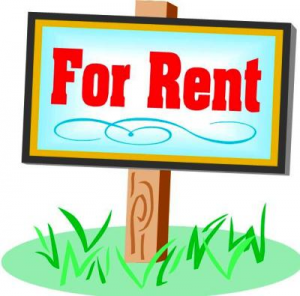 There’s a new approach in how people use software. In the old days, they bought a perpetual license for a one-time fee. Sophisticated systems, such as financial, equipment or management software like CMS, cost tens of thousands of dollars for a perpetual software license. It’s a big investment and requires a lot of thought and due diligence.
There’s a new approach in how people use software. In the old days, they bought a perpetual license for a one-time fee. Sophisticated systems, such as financial, equipment or management software like CMS, cost tens of thousands of dollars for a perpetual software license. It’s a big investment and requires a lot of thought and due diligence.
Well, times have changed. Rent, don’t buy software. Bill Gates of Microsoft advocated software rentals for years. It’s now here and a new approach called “Software as a Service” or “SaaS” has become commonplace. Similar to paying a monthly phone bill, software can be rented for a period of time. Quit paying the subscription fee and the software doesn’t work.
This change is evolutionary and changes how software can be used. CitiTech now offers a SaaS alternative. This will benefit potential users more than existing users because they already have a fully-paid perpetual license. But, occasionally, existing users may need a few extra user licenses. Renting them for a few months is significantly less expensive than buying perpetual licenses. The cost savings can be huge. Rather than spending thousands of dollars for a perpetual license, the software can be rented for as little as a few hundred dollars per user per month (depending on the modules).
New users, however, can see significant benefit. It eliminates the costly up-front investment, lowers software costs and changes software from a capital to a low-cost operational cost. It’s a “pay-as-you-go” approach that minimizes risk. The only disadvantage to SaaS is that it is not cost-effective for long-term users. Statistics show a perpetual license is more cost-effective for systems that have been in service for 3-5 years. Many of our users have been using CMS for ten years or more.
CitiTech has an answer for that. For users that want to rent CMS software and later decide to convert to a perpetual license, CitiTech will apply 50% of SaaS fees toward the perpetual license fee. This is an exciting new enhancement. If you are interested in learning more about renting CMS software, please call us at 1 (800) 738-9892.
By Brian McKiernan
Coming Soon…
Version 9 Reports!
Same great reports, only faster – and even easier to use. Although our previous approach to reports worked fine, processing the data using code and putting the results into an .xml file proved cumbersome. So, our new approach leverages the power of the server by creating SQL statements directly against the data – for better and faster results!
Of course, our easy-to-use functionality for modifying existing reports and creating custom reports will still exist; just brace yourself for the Mach 1 report results! Although still in development, a “snapshot in time” picture of the Reports interface currently looks like this:
By Tari Muth
More CitiTech News
New CitiTech Partner!
CitiTech Systems has partnered with Infrastructure Solutions, a Canadian-based consultant that specializes in asset management and capital planning. ISI has developed long-term asset capital improvement plans for over 60 communities in Canada and provides a priority-based optimization approach to asset management. “Where CMS manages assets and suggest the best work effort to maintain those assets, ISI takes it to the next level”, said Brian McKiernan, CitiTech president.
Asset management is the objective because it is cheaper to maintain existing assets than replace them. CitiTech effectively manages assets to extend asset life and lower life cycle costs. But, prioritization and optimization adds a new dimension to maintenance management. It prioritizes work, by activity, to ensure the right focus on work effort. It prioritizes assets that need work to occur. It maximizes the work effort to deliver the right solution at the right time. And, it goes beyond work prioritization to incorporate optimization.
When is the best time to make these improvements based on higher-level analysis? Infrastructure Solutions will be CitiTech’s Canadian provider. We will work closely with them to implement a complete solution to the Canadian market. We are pleased, and privileged, to welcome Infrastructure Solutions to the CMS family.
By Brian McKiernan
Guru’s Corner
Answered… More of YOUR Frequently-Asked Questions!
Q: “I’ve had some employee turnover. How can I get a few new people up to speed?”
A: CitiTech Systems offers “webinars” (web-based training sessions) – at no charge! Pick a topic, and give us a call to schedule it for a day and time that work for you. Best done after initial training, when a few users are being trained or as “refresher” training on one topic for one hour.
Q: “We’re new; all of us need trained – here. Do you offer on-site training?”
A: Yes! You can receive the Basic Training course for CMS at your location, using your data, for any and all modules purchased. Best for initial software training or follow-up training, for small groups and multiple topics. Call us for a price quote; it’s surprisingly affordable.
Q: “Our organization has so many users, it would be impossible to get them in one room at the same time! Now what?”
A: CitiTech Systems offers a “Train the Trainers” program to train Trainers how to train Users, sometimes in conjunction with consultants, and aligned with the organization’s business rules. Basic Training course plus Advanced Training course. Best for large organizations.
Q: “Our organization was trained, but we could use the “Refresher” training, and a few of us could use the “Advanced Course”. How can we divide the training time?”
A: Any way you want! Our trainers believe it’s YOUR training, and they’ll help you get the biggest “bang” for your buck. They will work with you to determine what to cover when, divide training times into multiple sessions with various audiences, and can propose a tentative agenda for your review/approval before training occurs. Give us a call for a price quote today at 1 (800) 738-9892 x7624
By Tari Muth
Maintenance Management Nuggets
Multifarious approaches to maintenance exist, but it seems the best results are achieved using a combination of them! Two are discussed below.
First, let’s talk about Maintenance Planning & Scheduling. Maintenance planning & scheduling prioritizes and organizes work so it can be executed in a highly efficient fashion. Managers and hourly employees alike in stores, accounting, purchasing, engineering and production must buy in to the concept and do their part for it to work.
Some of the major outcomes of planning and scheduling are:
•An organized approach to analyzing and executing any work identified
•Detailed plans, rules and records for the evaluation and execution of work
•Effective utilization of planners, supervisors and craftspeople.
These outcomes should yield these benefits:
•Cost savings due to efficient use of maintenance labor hours.
•Increased production yield from faster execution of all jobs.
•Reduced injuries and less stress from a better work flow.
As we can see, it’s all about efficiency and organization! When maintenance planning and scheduling is implemented alone, craftspeople often continue to be frustrated with emergencies caused by “surprise” breakdowns, forcing them to bypass the planning and scheduling procedures they labored too hard and long to deploy.
Next, let’s look at Condition-based Maintenance. Condition-based maintenance, or predictive maintenance as it’s often called, can be defined different ways. However, it is important to note that it goes far beyond vibration analysis.
Figure 1.
A Common Definition of Condition Based Maintenance The outcome of condition based maintenance is:
• Finding future failures before they manifest themselves as a breakdown of equipment or a component.
A breakdown is defined as the loss of the function a components was designed to accomplish e.g., when a pump stops pumping. As we can see, the outcome is pure information; knowing that an item will break in the future.
This in itself does not prevent any failures, but it allows you to:
• Gather information about the equipment and parts affected by the future breakdown.
• Plan and schedule the repair.
• Eliminate the cost of consequential damage caused by a functional failure.
When you repair it before a breakdown develops, you typically save 50-90%. (compare Figures 2 & 3)
Figure 2.
Planning and Scheduling Without Condition Based Maintenance.
When a breakdown is discovered, you must diagnose, plan, and repair it immediately to get production back up and running. Typically no resources are spared at this time.
Figure 3.
Planning and Scheduling and Condition Based Maintenance.
When impending failure is discovered ahead of time, you have time to plan it, get parts, schedule and repair it before a breakdown occurs. This typically cost 50-90% less and can often be scheduled with other repairs for less production impact.
The degree of savings above depends on how early you catch it, if can be repaired online, and the cost of repairs. Compare finding an impending breakdown on a standard motor you have in stock, attached to a production line scheduled for maintenance next Wednesday at 8 AM – 4 PM, to the scenario where a non-stock motor failed at night and forced a shutdown of the line for repair.
The second scenario will cost much more than the first as people scramble to find what’s wrong, call in several trades and perhaps stores. Add overtime, production losses, and contacting supplier(s) to find replacements and a familiar picture emerges. Implementation of predictive maintenance alone frequently results in many items being flagged for repair. However, only some of them are actually being repaired as maintenance does not have the efficient work practices (read planning and scheduling). Of course, this demoralizes operators and craftspeople as most items they find using predictive maintenance still break down instead of being repaired when discovered. On the other hand, when predictive maintenance and planning and scheduling are used together, they produce synergies like:
•reduced cost of spares and material
•increased labor productivity (primarily in maintenance but also for operators)
•better job satisfaction
•increased production yield
•effective work practices
•improved production quality
Either method has its good points, but also some bad points – and it seems that the impact of those bad points can be reduced, or even negated, by using both methods together. I learned this, and other stuff, from this awesome website: Article
By Tari Muth
